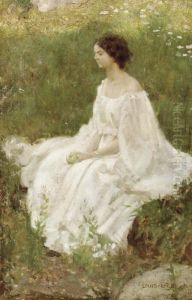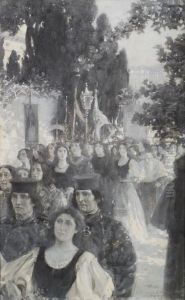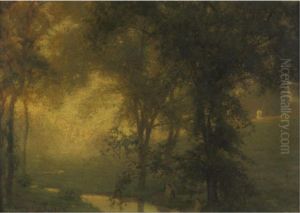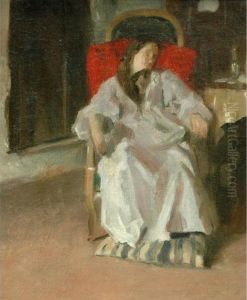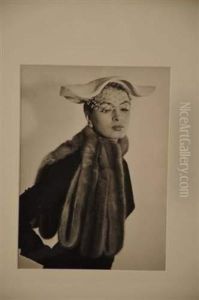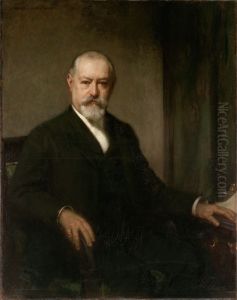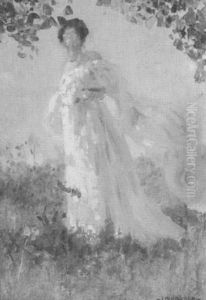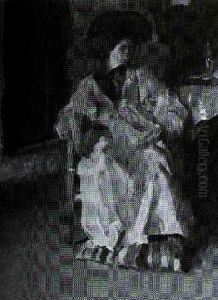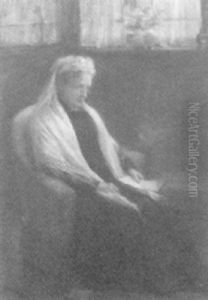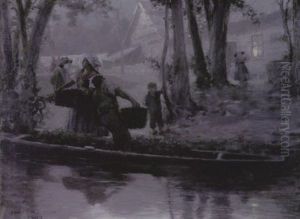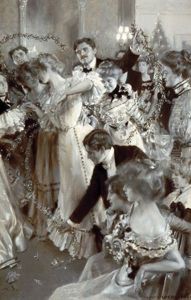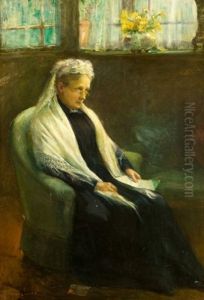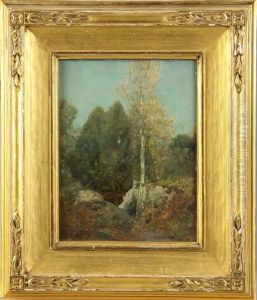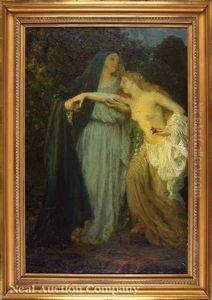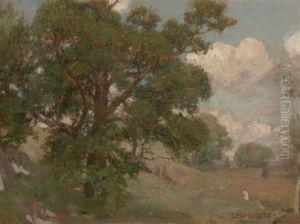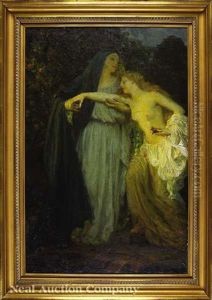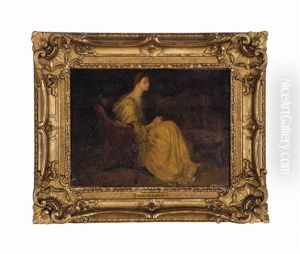Louis Loeb Paintings
Louis Loeb was born on November 7, 1866, in Cleveland, Ohio, to a Jewish family. He developed an early interest in art and pursued his passion by studying at the National Academy of Design in New York and later at the Académie Julian in Paris. His time in Paris was particularly influential, as he was exposed to the works of contemporary French artists, which would later impact his artistic style.
Loeb's artistic career was marked by his versatility. He worked in a variety of mediums, including painting, illustration, and later, mural painting. His style evolved over time, showing influences from Impressionism and Symbolism. Loeb became well-known for his illustrations, which were featured in prominent publications of the time such as Scribner's Magazine and Harper's Weekly. His illustrations often depicted scenes from everyday life, literature, and mythology.
In addition to his work as an illustrator, Loeb was an accomplished painter. His paintings often featured pastoral scenes, allegorical subjects, and portraits. One of his most famous works is 'The Land Baby,' which reflects his Symbolist influences and showcases his skill in capturing the ethereal qualities of his subjects.
Throughout his career, Louis Loeb was recognized for his contributions to art. He was a member of several art organizations, including the Society of American Artists and the National Academy of Design. His works were exhibited in the United States and abroad, earning him accolades and recognition.
Unfortunately, Louis Loeb's life was cut short when he died on July 12, 1909, in Egremont, Massachusetts, at the age of 42. Despite his early death, Loeb's work continued to be appreciated for its beauty and craftsmanship. Today, his art can be found in the collections of various museums and is studied by those with an interest in late 19th-century American art.
